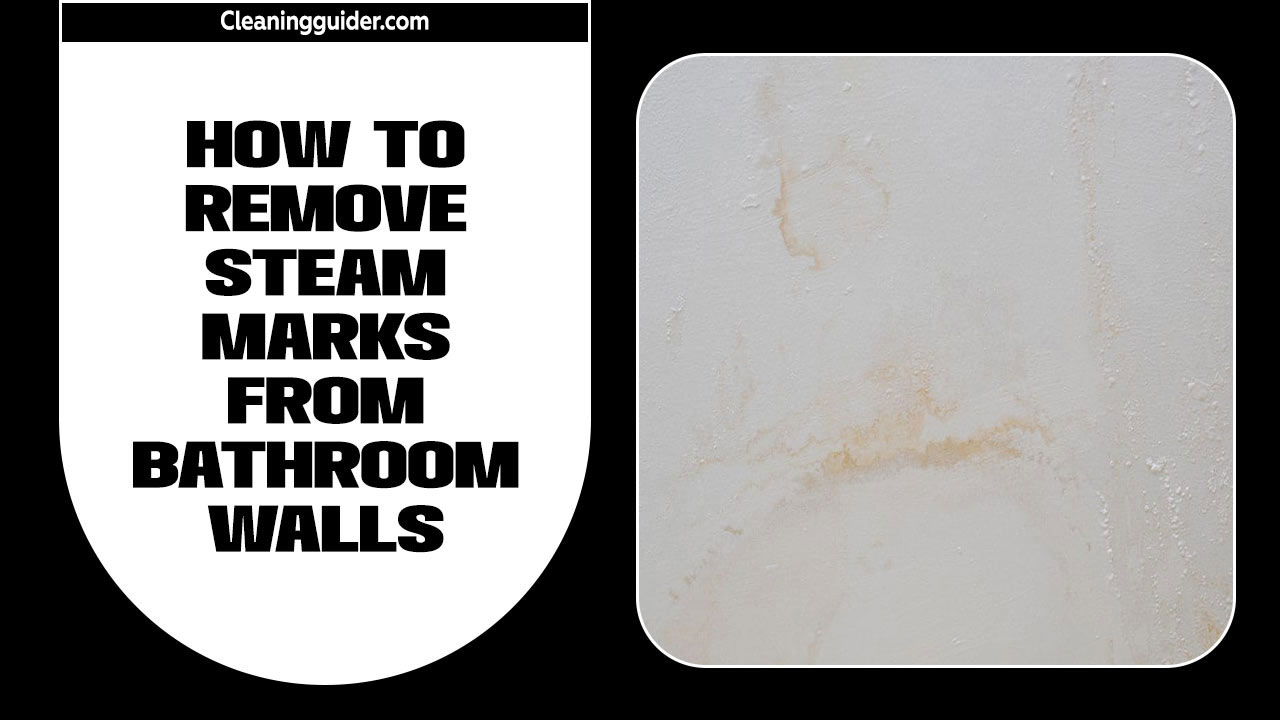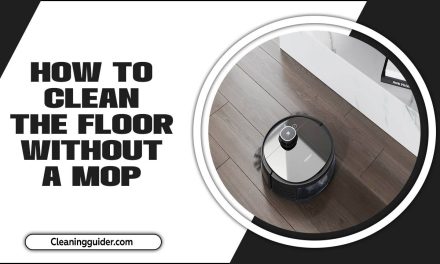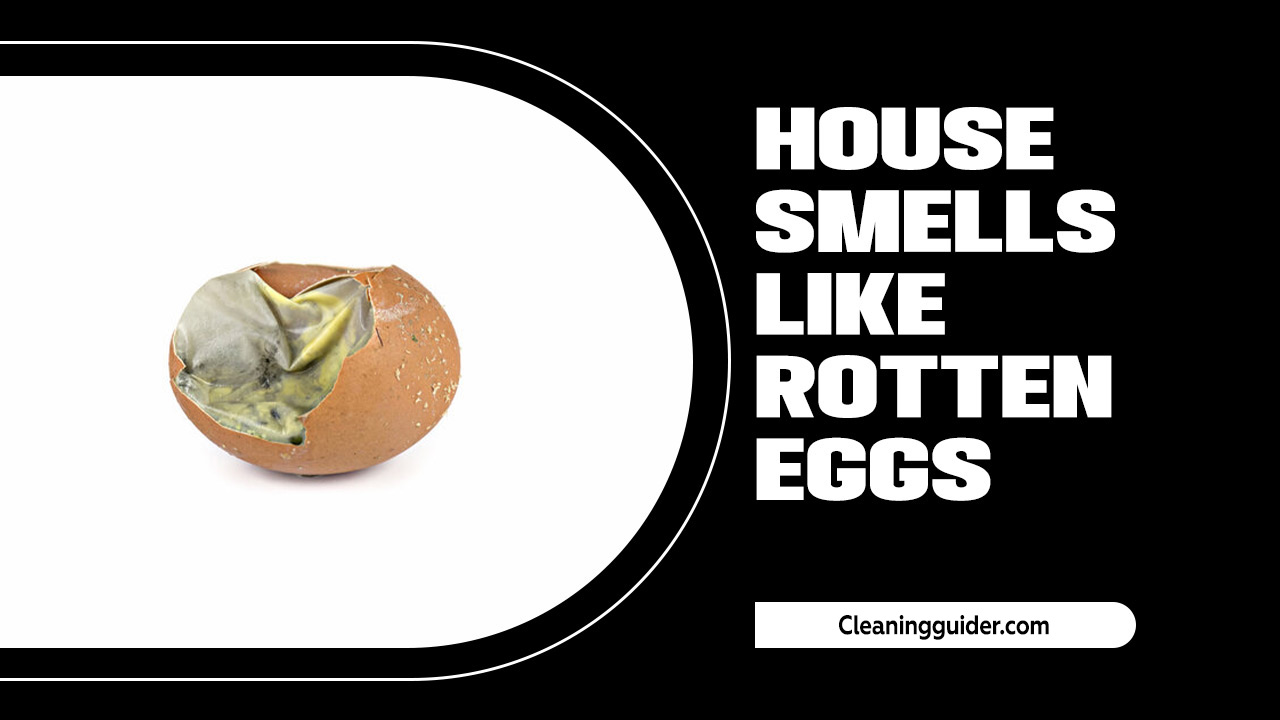A clean and sanitary bathroom is necessary in any household, and a slippery bathroom floor can be a major hazard for residents and guests. Whether caused by soap scum, hair products, or spilt water, a slippery bathroom floor poses a risk for slips and falls and gives an unclean and unhygienic appearance.
But fear not, as cleaning a slippery bathroom floor is a straightforward process that can be easily incorporated into your regular cleaning routine. How to clean slippery bathroom floor we will explore the most effective methods for tackling a slippery bathroom floor and ensuring a safe and hygienic environment.
From identifying the type of flooring to choosing the right cleaning products, we will cover all the essential steps and provide expert tips to help you maintain a clean and slip-free bathroom floor.
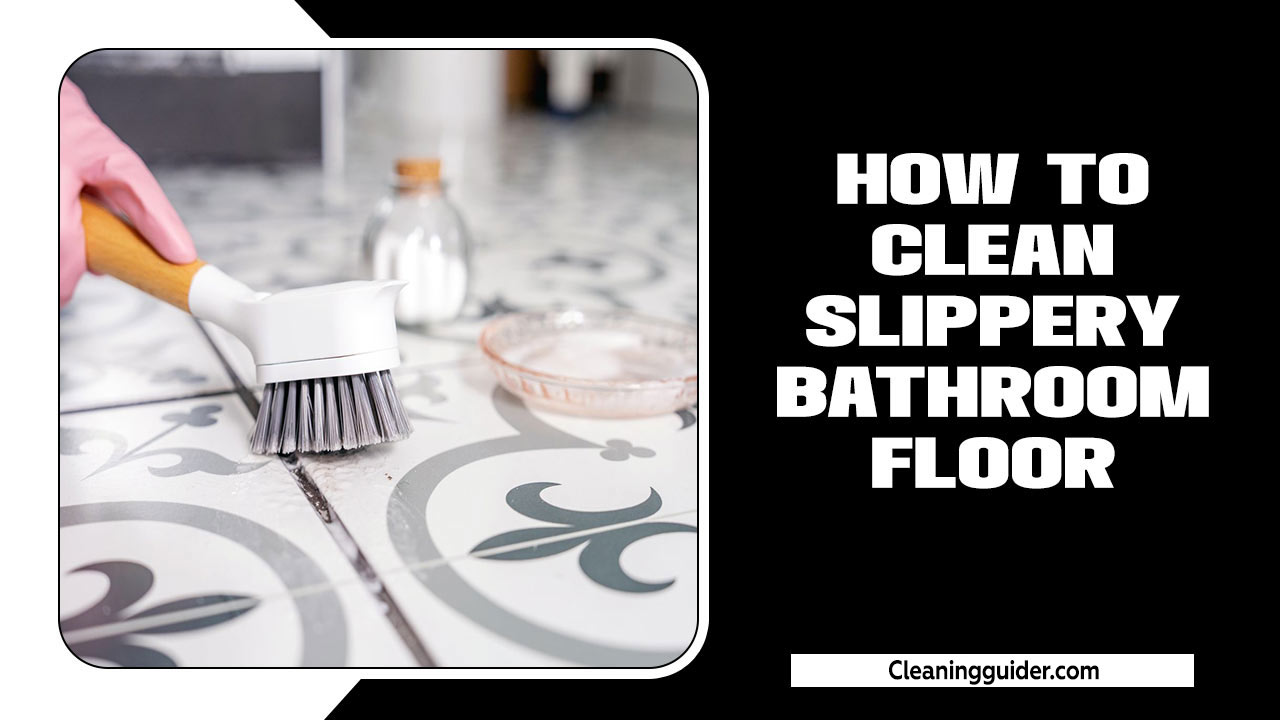
What Causes A Slippery Bathroom Floor?

A slippery bathroom floor can be a safety hazard and cause accidents. It is important to regularly clean and dry the area to prevent a slippery bathroom floor. Use non-slip mats or rugs near water sources to provide traction. You can also consider applying an anti-slip treatment to your flooring for added safety. Several factors can contribute to a slippery bathroom floor, including:
- Moisture: Moisture is the most common cause of a slippery bathroom floor. Water from the shower, sink, or toilet can accumulate on the floor, creating a slick surface.
- Soap Or Shampoo Residue: Soap and shampoo residue can leave a thin film on the bathroom floor, making it slippery. This is especially true if the residue is not properly rinsed off.
- Lack Of Traction: Some flooring materials, such as marble or ceramic tile, can be naturally slippery. If your bathroom floor lacks traction or has worn-out tiles, it can increase the risk of slipping.
- Mold Or Mildew: Mold or mildew growth in the bathroom can create a slimy surface that is prone to causing slips and falls.
How To Clean Slippery Bathroom Floor? – 8 Steps
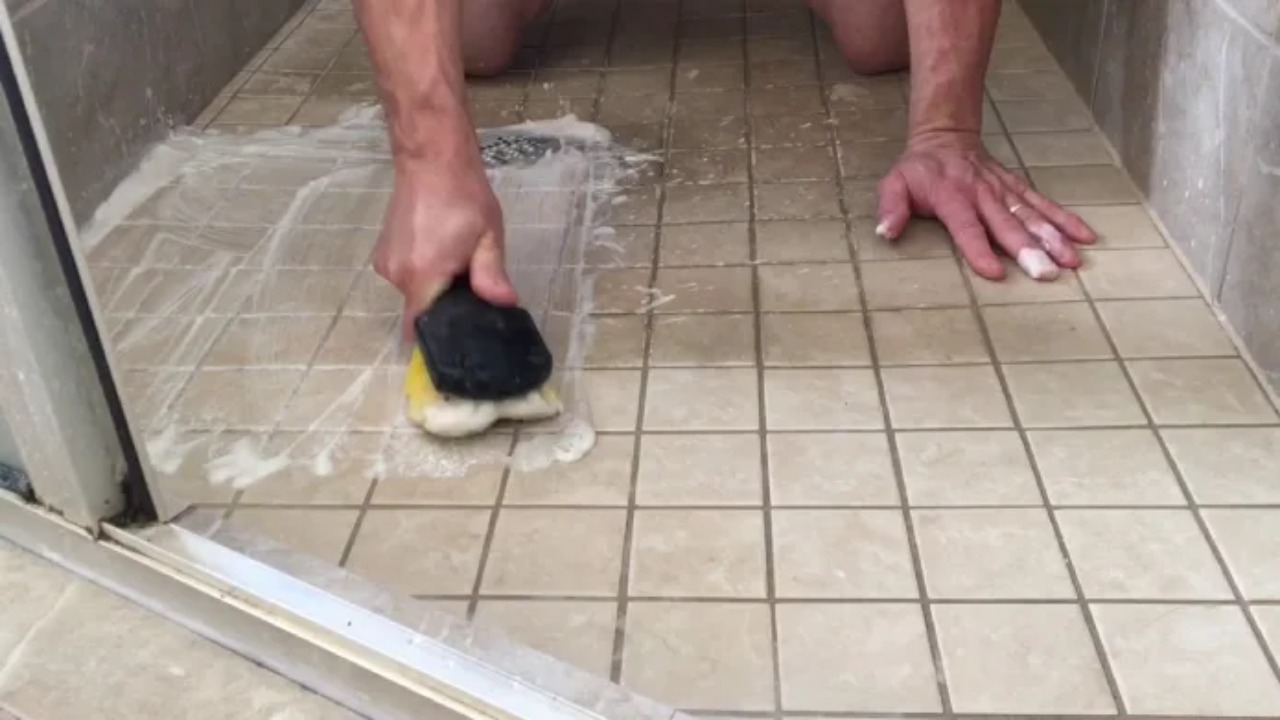
Cleaning a slippery bathroom floor is important to prevent accidents and maintain a safe environment. By following these steps regularly, you can keep your bathroom floor clean and free from slipperiness, creating a safer environment for everyone who uses it. Here are 8 steps to help you how to clean slippery bathroom floor:
Step 1:Preparing The Floor

Remove any loose dirt or debris from the bathroom floor to ensure an effective and safe cleaning process. Sweep or vacuum the floor to eliminate any loose particles before cleaning. It’s essential to have a clean surface, so brush away any dust or hair on the floor thoroughly.
Before diving into the cleaning process, ensure that the bathroom floor is free from obstacles or objects that could hinder your progress. Take the time to remove rugs, bath mats, or any other items that may be in the way.
Step 2: Cleaning With Water And Dish Soap
To clean a slippery bathroom floor, fill a bucket with warm water and add a small amount of dish soap. Use a mop or sponge to apply the soapy water solution to the floor, gently scrubbing in circular motions.
Rinse the floor with clean water to remove any soap residue, and then dry it thoroughly using a clean towel or allow it to air dry. This method helps remove dirt and grime from the tile surface, making the floor less slippery. Remember to avoid using excessive water, as it can seep into grout lines and cause damage to the bathroom flooring.
Step 3: Cleaning With Commercial Cleaners
To effectively clean a slippery bathroom floor, choosing a commercial cleaner specifically designed for bathroom floors is essential. Follow the instructions on the cleaner’s label to ensure the best results. Apply the cleaner to the floor and allow it to sit for the recommended time to penetrate stains and build-up. Then, scrub the floor using a brush or mop to remove any remaining dirt or grime. Finally, thoroughly rinse the floor with water to eliminate any residue from the cleaner.
Step 4: Cleaning With Vinegar
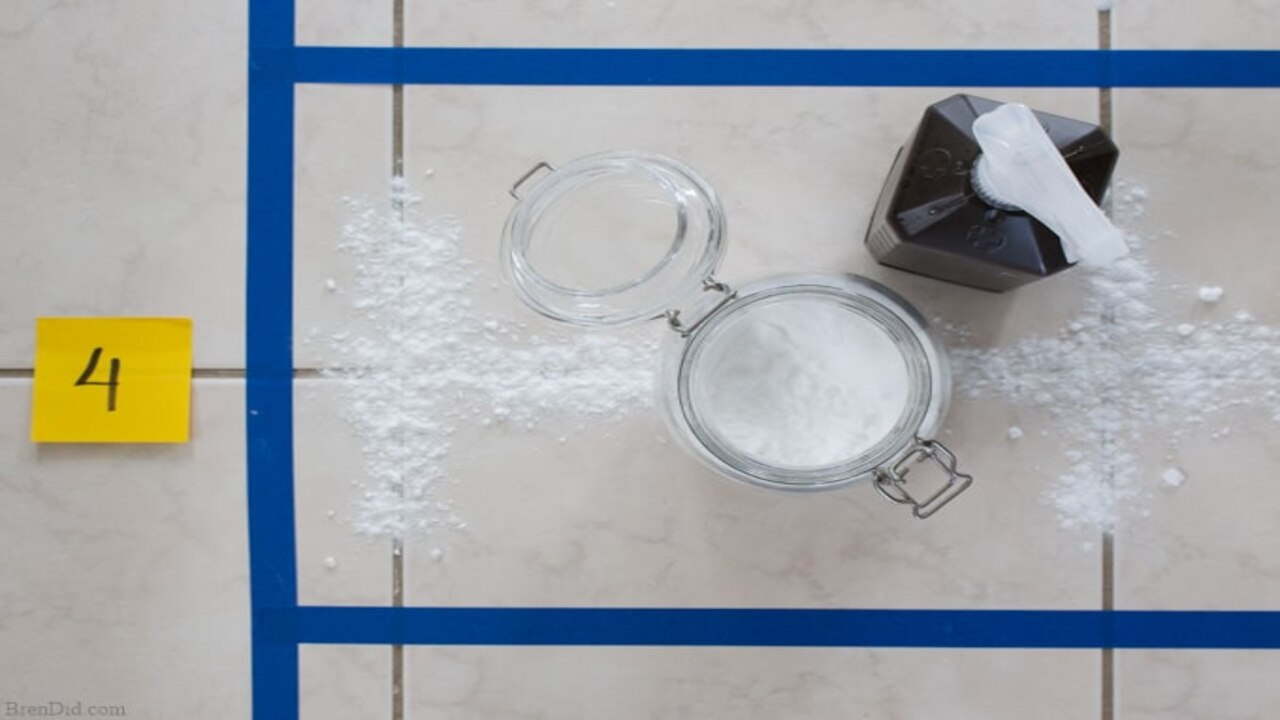
To clean slippery areas on your bathroom floor, prepare a mixture of equal parts vinegar and water in a spray bottle. Apply the vinegar solution to the problem areas and let it sit for a few minutes.
Then, scrub the floor using a brush or mop. Rinse the floor with clean water to remove any vinegar residue. To prevent slipperiness, make sure to dry the floor completely. This method is particularly effective because vinegar helps break down grease and residue on tile surfaces.
Step 5: Cleaning With Lemon Juice

To clean your slippery bathroom floor effectively, try using lemon juice. Dilute freshly squeezed lemon juice with water in a spray bottle. Then, spritz the solution onto the slippery areas of your bathroom floor. Allow it to sit for a few minutes before scrubbing the floor with a brush or mop.
Rinse the floor thoroughly with clean water to remove any lemon residue. Finally, dry the floor completely, providing you with a slip-free surface. Natural ingredients like lemon juice can safely and effectively clean and maintain your bathroom flooring.
Step 6: Cleaning With Baking Soda

To clean a slippery bathroom floor, you can use baking soda. Mix baking soda with water to create a paste until it forms a thick consistency. Apply the baking soda paste to the slippery areas of the bathroom floor. Let it sit for a few minutes before scrubbing the floor with a brush or sponge.
Rinse the floor with clean water to remove any baking soda residue. Finally, dry the floor thoroughly to prevent any slipperiness. This method effectively removes grime and makes the floor surface safer to walk on.
Step 7: Cleaning With Bleach And Water
To clean your slippery bathroom floor, mix a solution of bleach and water in a ratio of 1:10 (1 part bleach to 10 parts water). Apply the bleach solution to the slippery areas of the floor and let it sit for a few minutes. Then, scrub the floor with a brush or mop. Rinse the floor thoroughly with clean water to remove any bleach residue. Ensure the floor is completely dry before use to avoid any slip accidents.
Step 8: Cleaning With Ammonia
To clean your slippery bathroom floor, dilute ammonia with water in a well-ventilated area per the product instructions. Apply the ammonia solution to the affected areas and let it sit for a few minutes. Then, use a brush or mop to scrub the floor.
Rinse the floor thoroughly with clean water to remove any residue. Finally, ensure that the floor is completely dry to prevent any slipperiness. Following this step can effectively clean your bathroom floor and minimize the risk of fall accidents.
Tips For Keeping Your Bathroom Floor Clean And Slip-Free
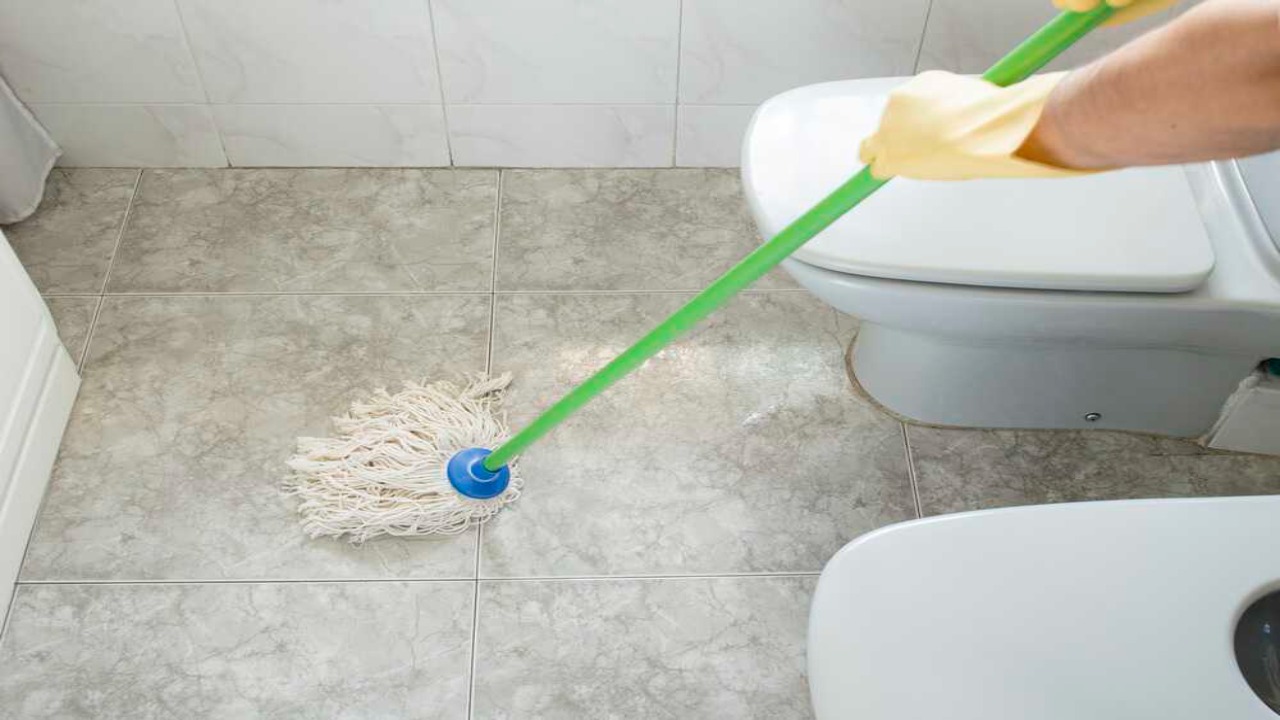
Keeping your bathroom floor clean and slip-free is essential for maintaining a safe and hygienic environment. By following these tips, you can maintain a clean and slip-free bathroom floor, ensuring the safety of everyone who uses it. Here are some tips to help you achieve this:
- Regular Cleaning: Clean your bathroom floor using a suitable cleaner, mop, or microfiber cloth. This will help remove any dirt, grime, or water that can make the floor slippery.
- Use Non-Slip Mats Or Rugs: Place non-slip mats or rugs near the bathtub, shower, and sink areas to provide extra traction and prevent slipping. Make sure to choose mats that have a non-skid backing.
- Wipe Up Spills Immediately: Any water or liquid spills should be wiped up immediately to prevent them from creating a slippery surface. Keep a towel or absorbent cloth handy in the bathroom for quick clean-ups.
- Install Grab Bars: Installing grab bars near the bathtub or shower can provide added support and stability when getting in and out.
- Avoid Using Excessive Soap: Too much soap can create a soapy residue on the bathroom floor, making it slippery. Use an appropriate amount of soap when cleaning yourself or the bathroom surfaces.
Safety Measures To Avoid Slipping On The Bathroom Floor
Slipping on a slippery bathroom floor can be a serious safety hazard. It is important to take certain safety measures to avoid accidents and maintain a safe environment. Here are some tips to help you prevent slipping on your bathroom floor:
- Use Non-Slip Mats Or Rugs: Place non-slip mats or rugs on the bathroom floor, especially in areas prone to getting wet, like near the shower or bathtub. These mats provide traction and can help prevent slips.
- Install Grab Bars: Installing grab bars near the toilet and shower can provide additional support and stability when moving around the bathroom.
- Keep The Floor Dry: Wipe up any water or spills immediately to prevent the floor from becoming slippery. Consider using a squeegee after showering to remove excess water.
- Use Non-Slip Bath Mats Or Decals In The Tub Or Shower: These products can provide added traction when standing or moving around in wet areas.
- Wear Appropriate Footwear: Avoid walking barefoot on a slippery bathroom floor. Instead, wear shoes with non-slip soles or choose footwear designed for wet areas.
By following these safety measures, you can reduce the risk of slipping on your bathroom floor and create a safer environment for yourself and others.
Conclusion
To sum up, maintaining a clean and slip-free bathroom floor is essential for the safety of you and your family members. Following the abovementioned steps, you can effectively clean and remove any slippery residue from your bathroom floor. Additionally, implementing regular cleaning routines and using non-slip mats or rugs can help prevent accidents caused by slippery surfaces.
Remember, prevention is better than cure for slip and fall accidents. So, take the necessary precautions to always keep your bathroom floor clean, dry, and slip-free. Your safety is in your hands. With a little effort and consistency, you can ensure a slip-free and clean bathroom floor in your home. We hope you now understand how to clean slippery bathroom floor.
Frequently Asked Questions
1.How Do I Get Rid Of Slippery Floor In Bathroom?
Ans: Regular cleaning and maintenance are crucial for preventing a slippery bathroom floor. Use a non-slip cleaner or apply a non-slip treatment to the surface. Consider installing slip-resistant flooring tiles or mats for added traction. Place bath rugs or towels to absorb excess water and prevent slips.
2.Why Is My Bathroom Floor Slimy?
Ans: Various factors, such as soap scum, hard water stains, or mold/mildew can cause a slimy bathroom floor. Soap residue and hard water stains create a slippery film on the floor’s surface, while mold and mildew thrive in moist environments like bathrooms. Regular cleaning with appropriate products can prevent these issues.
3.How Do You Clean A Slippery Floor?
Ans: To clean a slippery floor, start by removing loose dirt and debris. Use a non-slip cleaner or degreaser designed for slippery floors. Scrub the floor with a stiff-bristled brush to remove dirt and grime. Rinse with water and dry thoroughly.
4.Why Is My Bathroom Floor Slippery When Dry?
Ans: One common reason for a dry, slippery bathroom floor is the buildup of soap scum. Additionally, hard water can cause mineral deposits that make the floor slick. Insufficient ventilation in the bathroom can also lead to excess moisture and a slippery surface. Proper cleaning techniques and choosing appropriate products can help prevent this issue.
5.How Do I Make My Bathroom Floor Tiles Less Slippery?
Ans: Use a floor cleaner designed for non-slip surfaces to make your bathroom floor tiles less slippery. You can apply an anti-slip coating to the tiles or add slip-resistant mats or stickers to the floor. Regularly cleaning the floor will help remove any buildup contributing to slipperiness.

